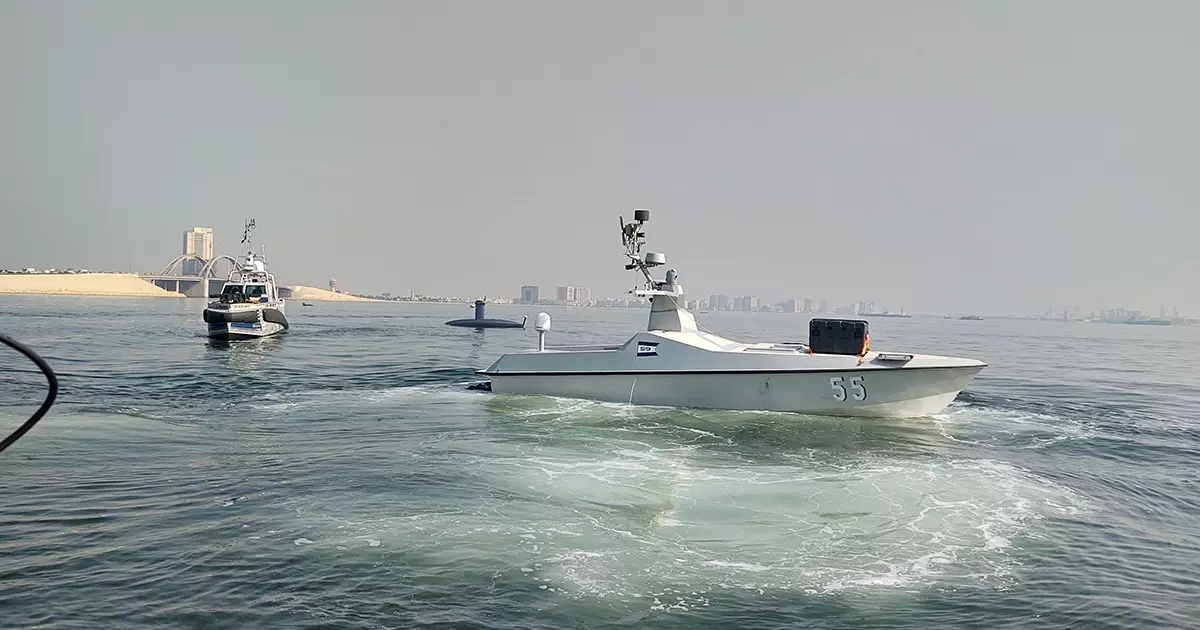Digital Horizon: Unmanned Vehicle Exercise in Bahrain Showcases Cross-Sector Collaboration

Utilizing surveillance data from dispersed and disparate sensors to know what's happening in the maritime domain is smart idea. The intelligent solution to deal with enormous amount of data is to leverage artificial intelligence. The US Navy's Task Force 59 has done exactly that during the recent Digital Horizon exercise.
Part of the US Fifth Fleet, based in Bahrain, Task Force 59 is the Navy's first task force dedicated to rapidly integrating and merging unmanned systems and artificial intelligence into maritime operations. Digital Horizon was a military event that engaged a number of partners together, harnessing the capabilities of artificial intelligence, mesh communications networks and new technologies, to bring unmanned assets into the Fifth Fleet.
The 17 industry partners—who worked side-by-side with each other and the military personnel taking part in the exercise—brought their 15 advanced unmanned platforms, data integration and AI systems to Bahrain, 10 of which were introduced for the first time.
Vice Adm. Brad Cooper, commander of US Naval Forces Central Command, Fifth Fleet and Combined Maritime Forces, said Digital Horizon launched the US Navy on a journey of discovery and innovation to meet a critical need for maritime domain awareness: "The waters in the Middle East region are dynamic and fast. We're talking 5,000 miles of coastline from the Red Sea around the Arabian Peninsula into the Arabian Gulf—that’s a huge area to cover—and perhaps too large an area to cover with manned vessels. But more important, these waters are vital to the global economy."
According to Cooper, the new technology allows the operators to see further, faster, and more efficiently, so that manned ships can be used more effectively. Cooper said that less than two years ago the concept was just a two-page white paper, and today TF 59 has reached full operational capability, and has established operating hubs in Bahrain and Aqaba, Jordan, and is teaming with many other nations. And while the number of USVs in use in CTF 59 today is relatively small, Cooper said the goal is to have US and partner nations operating 100 drones in the region by the end of next summer.
"In our exercise, we replicated activity that we would regularly see here in the region, and we pushed the systems to their limits through about 30 different tactical scenarios to observe their true capabilities. By getting our hands on new systems, we're able to figure out what works and what doesn't. Our feedback helps move innovation process forward," said Capt. Michael Brasseur, the task force commander.
MANAGING MISSION DATA
A primary objective of the exercise was to transmit the data from the various platforms and their respective sensors to Task Force 59 Robotics Operations Center (ROC) on the Naval Support Activity in Bahrain, where it is being processed, analyzed, and displayed. The AI and machine learning helps with sifting through the huge amount of data to understand “patterns of life,” and helps determine what is and isn’t normal activity so something out of the ordinary can be further investigated, ultimately helping operators make quicker and better decisions.
The result is the presentation of a common operating picture on a "single pane of glass," and allows for command and control of multiple unmanned systems on one screen, so that one operator can control multiple unmanned systems, as opposed to one system controlled by multiple operators.
Identifying potential threats faster allows for the US Navy to better position manned platforms to respond more rapidly. The vehicles taking part in Digital Horizon represented a wide range of capabilities from small to large, slow to fast, and short endurance to long-range."
ACCELERATING COLLABORATION
The “mesh network” that linked everything together was provided by Silvus Technologies. Accenture Federal Services and Big Bear AI provided the data integration and artificial intelligence systems for the exercise. Although not present in Bahrain, an Ocius USV operating off Western Australia was linked into the network.
The AI operates on higher levels of sophistication, not only in the pattern of life but the command and control of the drones themselves, using both commercially available systems and government software. “We’ve done them separately in the past, and now we have them integrated here in the ROC, using three specific applications—Computer Vision; AI-Enabled C2 and Anomalous Behavior Detection—all integrated on this single pane of glass,” Brasseur said.
"One of the real advantages of Digital Horizon is to have the operator and our industry partners together in the operational environment working side by side. This enables a pace of innovation we just haven't seen before."
THE FUTURE
Participants unanimously agreed that the events like Digital Horizon are the key to harnessing these new technologies to ultimately improve maritime threat detection and build an integrated unmanned and AI network with partners.
The vision of a "digital ocean" with a vast integrated network of sensors from seabed to surface to space, including unmanned systems, subsea sensors, ships, satellites, buoys, and other critical technologies, both from US and its international partners, isn't a far-fetched idea in a distant future. The technology exists and is being embraced today.
To read the full article, which was featured in ON&T Jan/Feb 2023, click here.

